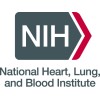
Combination Chemotherapy Plus Peripheral Stem Cell Transplantation in Treating Patients With Refractory...
LeukemiaRATIONALE: Drugs used in chemotherapy use different ways to stop cancer cells from dividing so they stop growing or die. Combining chemotherapy with peripheral stem cell transplantation may allow the doctor to give higher doses of chemotherapy and kill more cancer cells. PURPOSE: Phase I/II trial to study the effectiveness of combination chemotherapy plus peripheral stem cell transplantation in treating patients with refractory chronic lymphocytic leukemia.

Rituximab and Interleukin-12 in Treating Patients With B-Cell Non-Hodgkin's Lymphoma
Extranodal Marginal Zone B-cell Lymphoma of Mucosa-associated Lymphoid TissueNodal Marginal Zone B-cell Lymphoma5 moreMonoclonal antibodies, such as rituximab, can locate cancer cells and either kill them or deliver cancer-killing substances to them without harming normal cells. Interleukin-12 may kill cancer cells by stopping blood flow to the tumor and by stimulating a person's white blood cells to kill cancer cells. Combining rituximab with interleukin-12 may kill more cancer cells. This randomized phase II trial is comparing how well giving rituximab together with two different schedules of interleukin-12 works in treating patients with B-cell non-Hodgkin lymphoma.

Pentostatin and Rituximab in Treating Patients With Low-Grade Non-Hodgkin's Lymphoma or Chronic...
LeukemiaLymphomaRATIONALE: Drugs used in chemotherapy use different ways to stop cancer cells from dividing so they stop growing or die. Monoclonal antibodies such as rituximab can locate cancer cells and either kill them or deliver cancer-killing substances to them without harming normal cells. Combining chemotherapy with monoclonal antibody therapy may kill more cancer cells. PURPOSE: Phase II trial to study the effectiveness of combining pentostatin and rituximab in treating patients who have non-Hodgkin's lymphoma or chronic lymphocytic leukemia.

Immunosuppressive Preparation Followed by Blood Cell Transplant for the Treatment of Blood Cancers...
Chronic Lymphocytic LeukemiaGraft vs Host Disease3 moreDiseases such as leukemia, lymphoma, and multiple myeloma fall into the category of blood cancers. Some of these conditions can now be cured by bone marrow transplantation (BMT). The ability of BMT to cure these conditions has been credited to the use of high doses of chemotherapy, radiation therapy, and the antileukemia effect of the transplant. Because the effectiveness of BMT relies on the use of high doses of chemotherapy and total body irradiation (TBI), it is a therapy associated with toxic side effects. These side effects are often deadly and have limited BMT for use in patients under the age of 55. In this study researchers plan to treat older patients between the ages of 55 to 75 years with blood cell transplants taken from donors who are genetically matched relatives of the patient. In order to decrease the toxic side effects associated with the transplant, researchers will not use chemoradiotherapy. Instead they plan to use intensive immunosuppressive therapy and allow the transplanted cells to take effect.

Clofarabine in Chronic Lymphocytic Leukemia
Hematologic NeoplasmsLymphoproliferative Disorders4 moreThis is a dose-escalation study to determine the maximum tolerated dose and toxic effects of clofarabine in patients with chronic lymphocytic leukemia and other acute leukemias. Clofarabine is a synthesized hybrid nucleoside analog, which is believed to possess the better qualities of fludarabine and chlorodeoxyadenosine, the 2 most active agents against lymphoproliferative disorders. Thus, it is hoped that this drug will be more active and less toxic than similar drugs.

Oxaliplatin in Treating Patients With Relapsed or Refractory Non-Hodgkin's Lymphoma
Angioimmunoblastic T-cell LymphomaExtranodal Marginal Zone B-cell Lymphoma of Mucosa-associated Lymphoid Tissue15 morePhase II trial to study the effectiveness of oxaliplatin in treating patients who have relapsed or refractory non-Hodgkin's lymphoma. Drugs used in chemotherapy use different ways to stop tumor cells from dividing so they stop growing or die

Thalidomide in Treating Patients With Relapsed Chronic Lymphocytic Leukemia
B-cell Chronic Lymphocytic LeukemiaRefractory Chronic Lymphocytic LeukemiaPhase II trial to study the effectiveness of thalidomide in treating patients who have relapsed chronic lymphocytic leukemia. Thalidomide may stop the growth of chronic lymphocytic leukemia by stopping blood flow to the tumor.

Fludarabine Phosphate, Low-Dose Total-Body Irradiation, and Donor Stem Cell Transplant Followed...
Acute Undifferentiated LeukemiaAdult Nasal Type Extranodal NK/T-cell Lymphoma63 moreThis clinical trial studies fludarabine phosphate, low-dose total-body irradiation, and donor stem cell transplant followed by cyclosporine, mycophenolate mofetil, and donor lymphocyte infusion in treating patients with hematopoietic cancer. Giving low doses of chemotherapy, such as fludarabine phosphate, and total body irradiation (TBI) before a donor peripheral blood stem cell transplant helps stop the growth of cancer cells. It may also keep the patient's immune response from rejecting the donor's stem cells. The donated stem cells may replace the patient's immune cells and help destroy any remaining cancer cells (graft-versus-tumor effect). Giving an infusion of the donor's T cells (donor lymphocyte infusion) after the transplant may help increase this effect. Sometimes the transplanted cells from a donor can also make an immune response against the body's normal cells. Giving cyclosporine and mycophenolate mofetil after the transplant may stop this from happening.

Chemotherapy in Treating Patients With Chronic Lymphocytic Leukemia
LeukemiaRATIONALE: Drugs used in chemotherapy use different ways to stop tumor cells from dividing so they stop growing or die. PURPOSE: Phase I/II trial to study the effectiveness of CC-1088 in treating patients who have chronic lymphocytic leukemia that has not responded to previous therapy.

Ibrutinib, Obinutuzumab and Venetoclax for Patients With Chronic Lymphocytic Leukemia
B-Cell Chronic Lymphocytic LeukemiaB-Cell Chronic Lymphocytic Leukemia in Relapse (Diagnosis)Background: Chronic Lymphocytic Leukemia (CLL) is the most common leukemia in the occidental countries. Until now, it is considered a chronic disease without a cure. The development of new molecular therapies have showed that the cure may be an option. This protocol propose a triple sequential therapy with three direct therapies for the leukemic cell: an inhibitor of Bruton´s tyrosine kinase (ibrutinib), a second generation monoclonal antibody versus CD20 (obinutuzumab) and a BCL-2 inhibitor (venetoclax) as treatment of first or second line in CLL. Objective: Negativize the minimal residual disease and by this way obtain longer survivals (overall survival and relapse free survival). Design: This is a multicenter, longitudinal, experimental, open, non-randomized and non-comparable study coordinated by the "Grupo Cooperativo de Hemopatías Malignas" situated on Hospital Angeles Lomas in Huixquilucan, México. The study, is a phase II clinical study that will employ three target therapy drugs in sequencing phases. It will start with a BTK inhibitor as induction, later an anti-CD20 will be used for consolidation and it will end with a BH3 analog as maintenance for one year. The primary outcome is the negativization of minimal residual disease.
